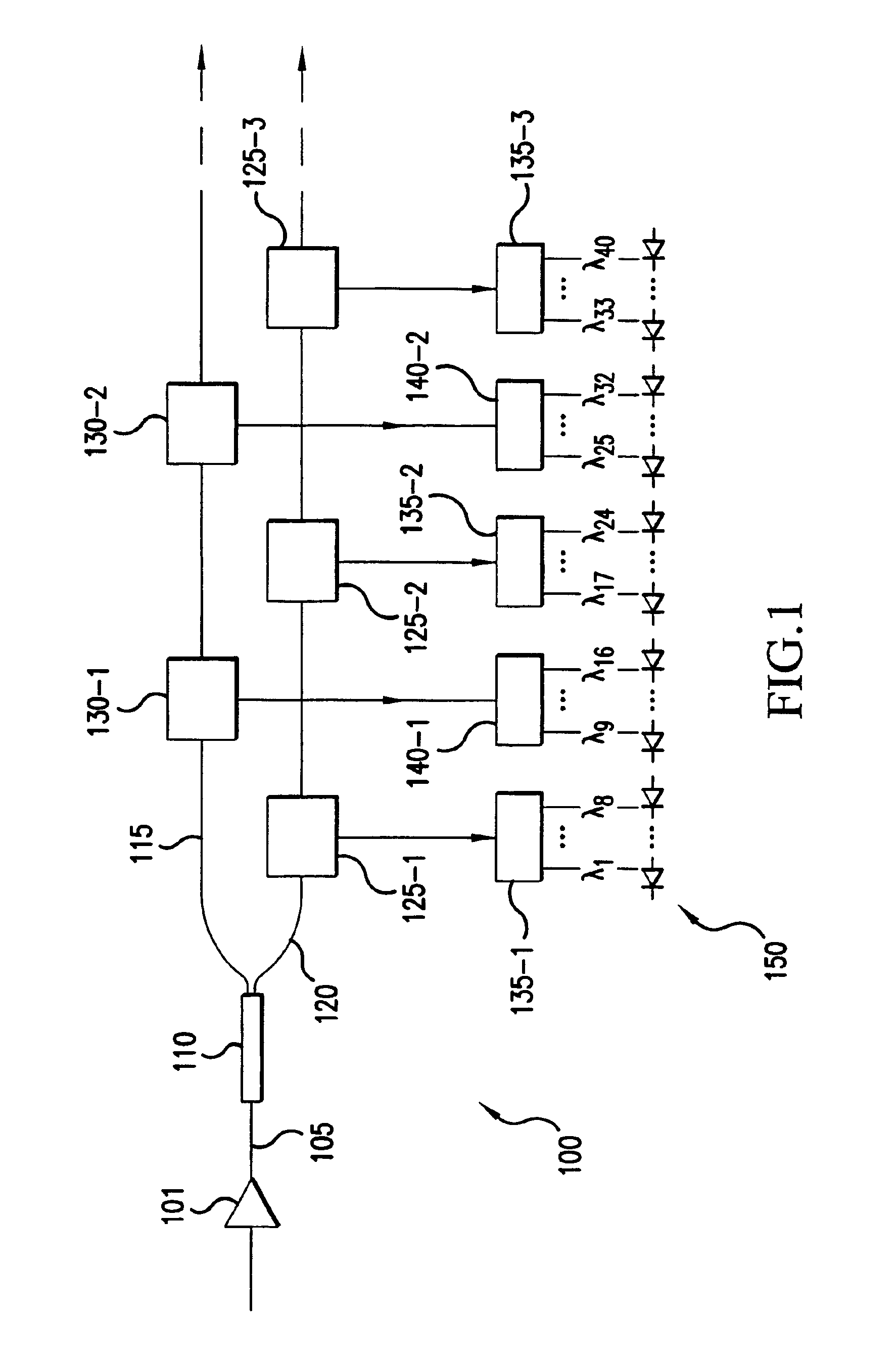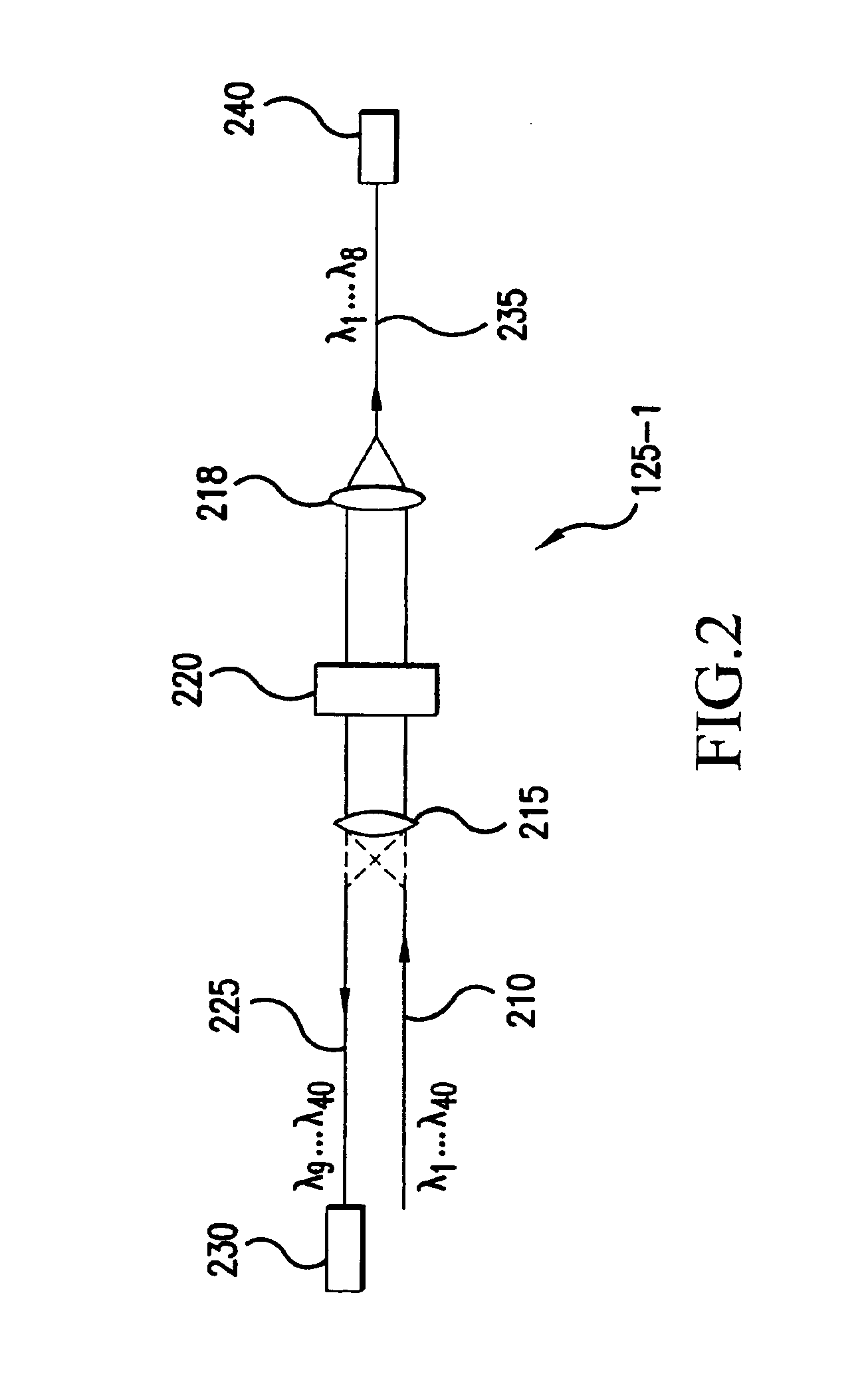Optical device including dynamic channel equalization
a technology of optical channel and dynamic equalization, which is applied in the field of optical devices including dynamic equalization of optical channel bands, can solve the problems of limited tdm capacity, prohibitive expansion cost, and limited current capacity of existing waveguide media
- Summary
- Abstract
- Description
- Claims
- Application Information
AI Technical Summary
Benefits of technology
Problems solved by technology
Method used
Image
Examples
Embodiment Construction
[0037]In accordance with the present invention, optical channels to be demultiplexed are supplied to first and second optical fibers via an optical splitter. Low loss interference filters, for example, coupled to the first and second optical fibers, select respective groups of channels. Each group of channels is next demultiplexed with sub-demultiplexers into individual channels, each of which is then sensed with a corresponding photodetector. Although the optical splitter introduces an optical power loss at the input to the demultiplexer, the interference filters and sub-demultiplexers create little additional loss. As a result, the total power loss associated with the present invention is significantly less than that obtained with a conventional n channel demultiplexer based on a 1×n splitter. Accordingly, large numbers of channels, e.g., in excess of forty can be readily demultiplexed and detected.
[0038]Turning to the drawings in which like reference characters indicate the same ...
PUM
 Login to View More
Login to View More Abstract
Description
Claims
Application Information
 Login to View More
Login to View More - R&D
- Intellectual Property
- Life Sciences
- Materials
- Tech Scout
- Unparalleled Data Quality
- Higher Quality Content
- 60% Fewer Hallucinations
Browse by: Latest US Patents, China's latest patents, Technical Efficacy Thesaurus, Application Domain, Technology Topic, Popular Technical Reports.
© 2025 PatSnap. All rights reserved.Legal|Privacy policy|Modern Slavery Act Transparency Statement|Sitemap|About US| Contact US: help@patsnap.com



